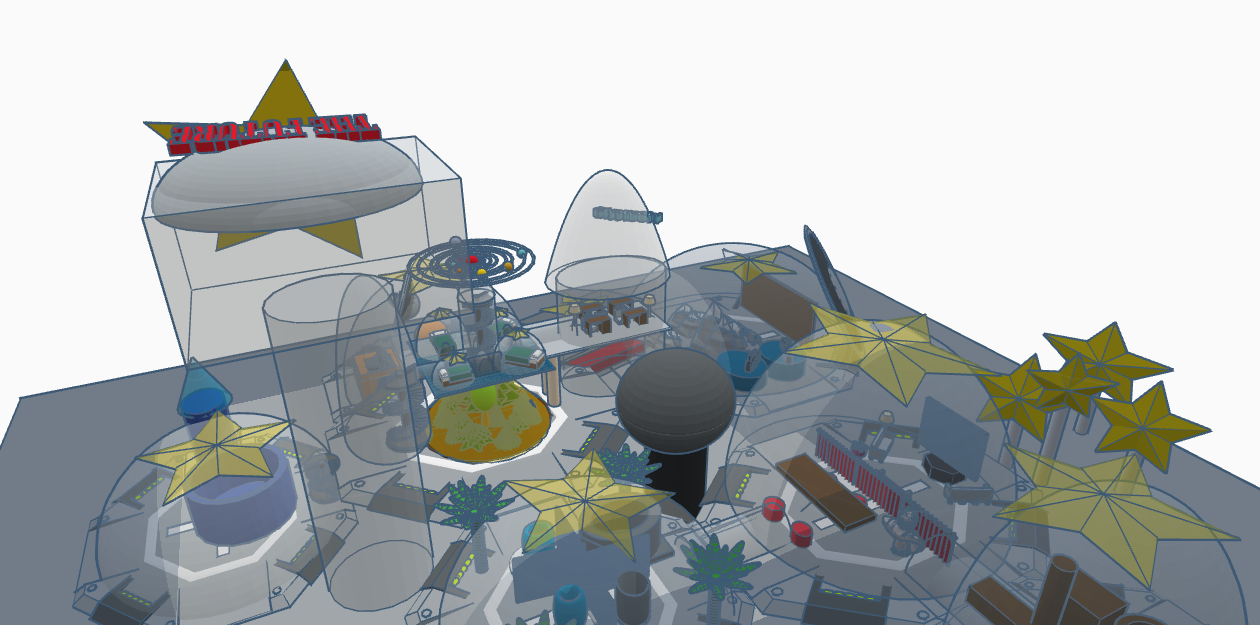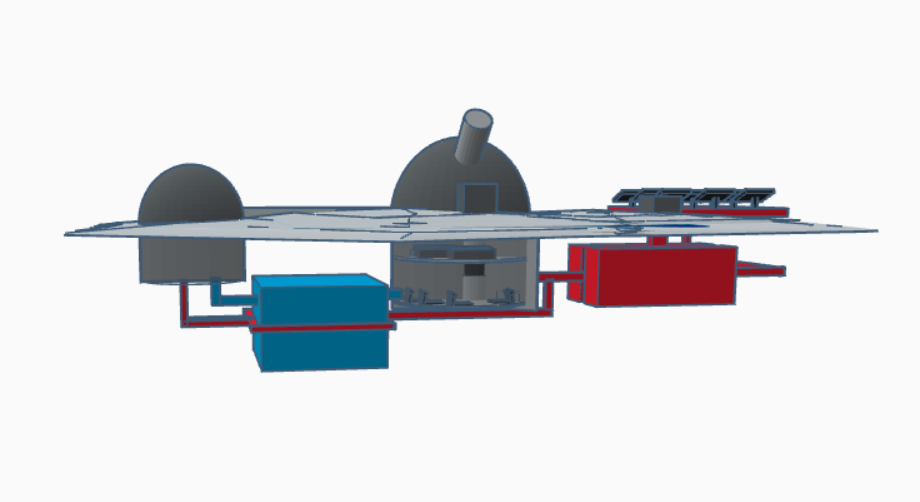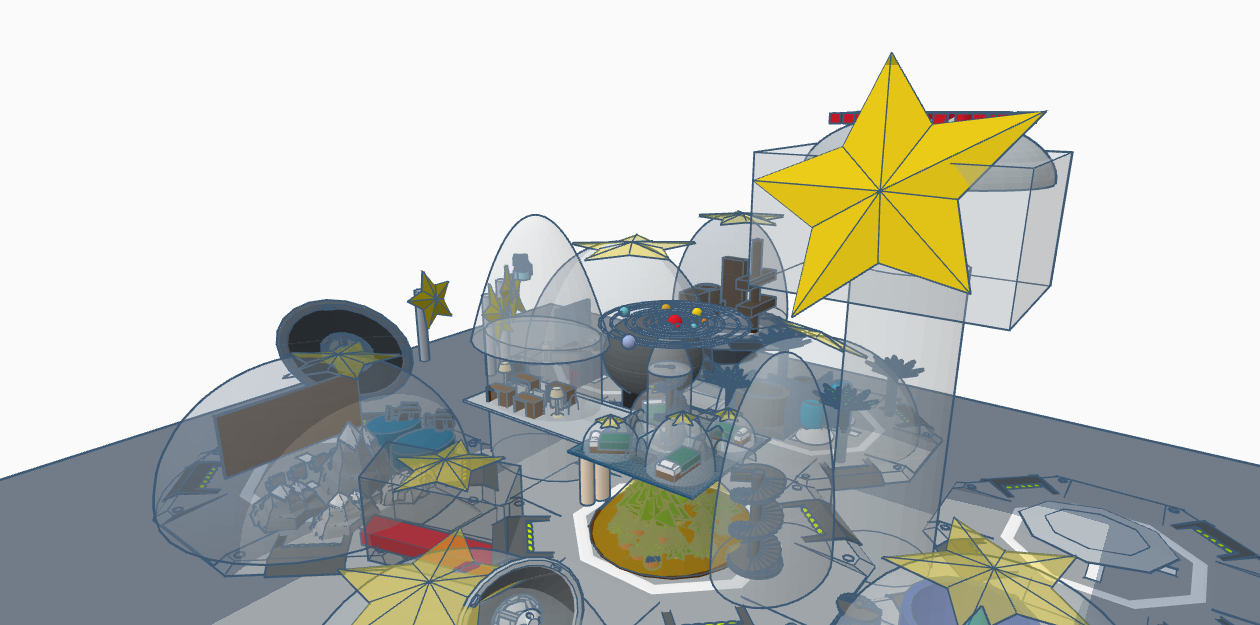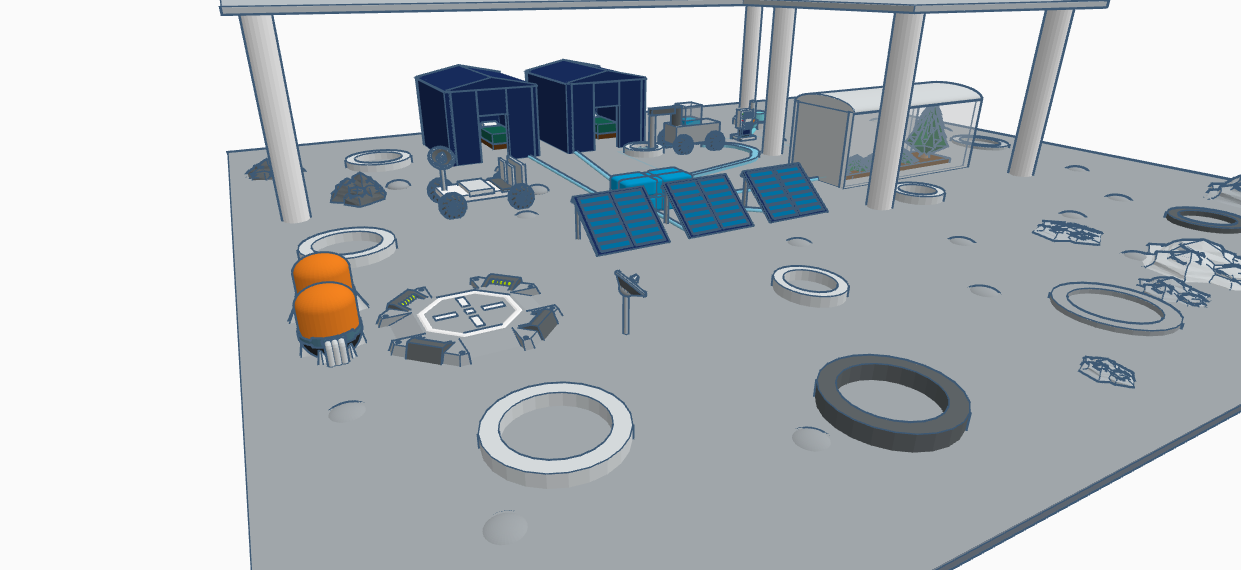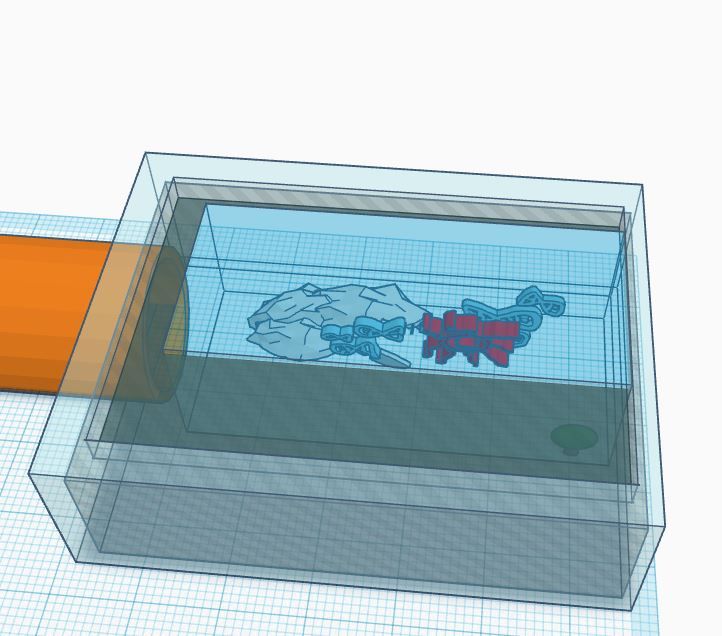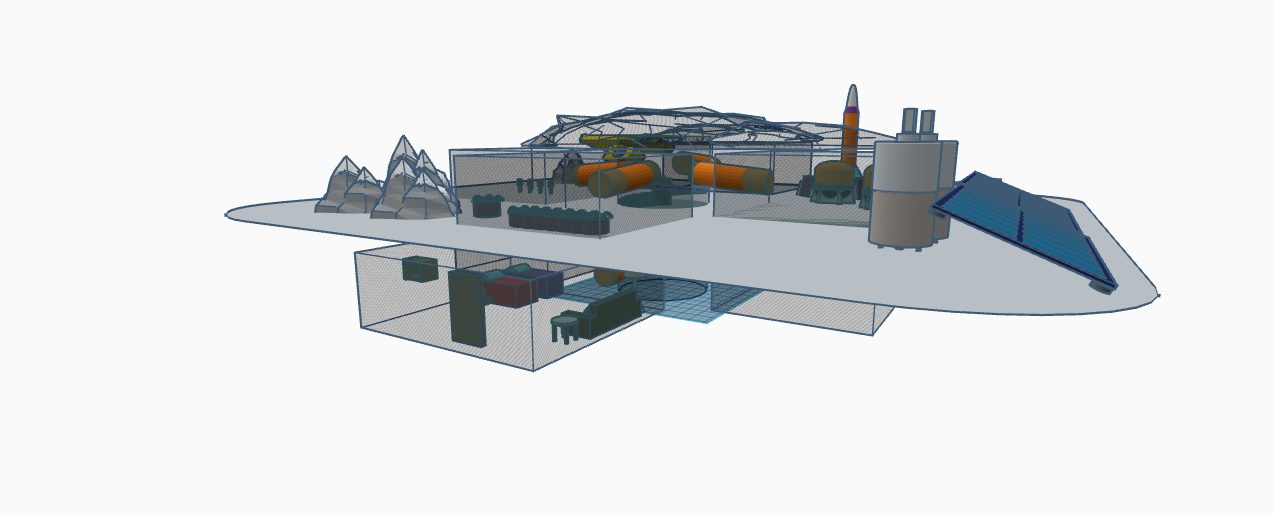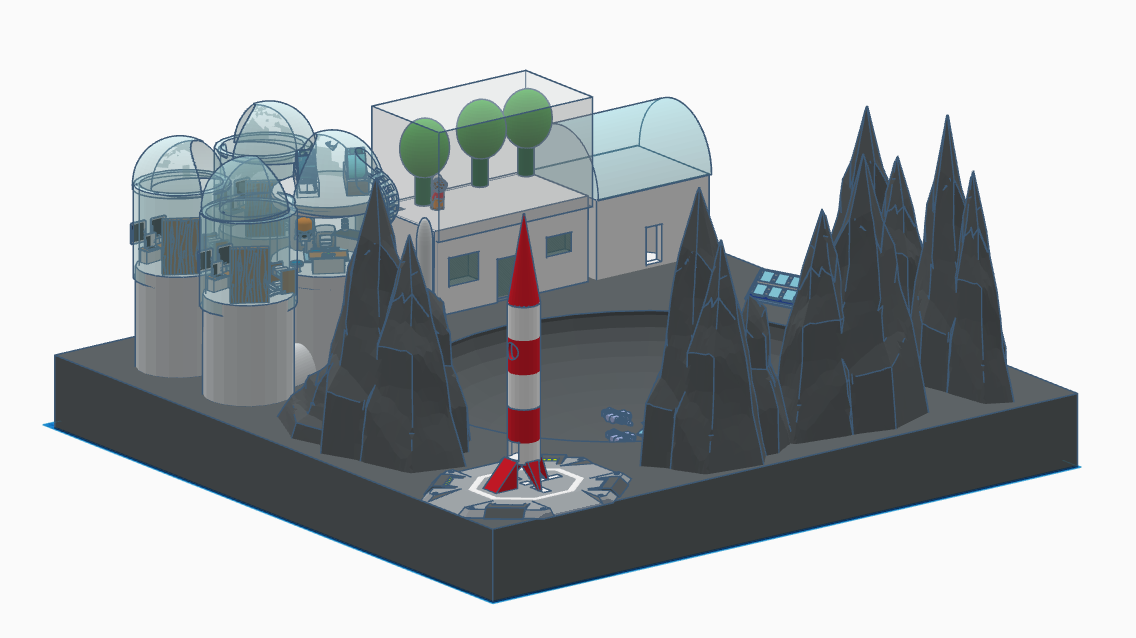Moon Camp Explorers Gallery 2021-2022
In Moon Camp Explorers each team’s mission is to 3D design a complete Moon Camp using Tinkercad. They also have to explain how they will use local resources, protect astronauts from the dangerous of space and describe the living and working facilities.
Team: team B
European School Brussels III Brussels Belgium 14 2 / 2
|
Project description
Our Moon camp will include a big central piece, a common area, each “room” will have two beds and will be able to house two people. There will be an area for the food, greenhouse and where the rest of the “household appliances” will be kept. The rocket, lunar lander and rover (etc) will be kept at a safe distance from the base. |
||||
|
Where do you want to build your Moon Camp?
The northern rim of Peary Why did you choose this location?
The northern rim of Peary is site for a future lunar base, all this well-lit almost constant, which would provide a stable temperature and an almost uninterrupted supply of solar energy. It is also close to areas with a lot of water. How do you plan to build your Mooncamp? Which materials will you use?
Our Moon Base will be built using Lunarcrete, a concrete alternative made using lunar soil. The windows will be made using a high-temperature quartz glass that can withstand the lunar conditions. The camp will be built on earth in separate part and will be “connected” on the moon. |
||||
|
Water
|
Food
|
Electricity
|
Air
|
Protection
|
|
Water will be brought from earth in vast quantities, extraction and controlled usage will be put in place. |
Freeze dried food will be brought from earth along with seeds that will be fertilized in a greenhouse at the Moon Camp, simulating the Earth’s atmosphere. Pureed food, cans and any other foods that can withstand the pressure, are lightweight, nutritious and can stay good for extended periods of time without refrigeration. |
It transports energy to receivers on earth to be used as electricity. The microwave beams would be used to send energy back to earth from the moon. |
There are oxygen tanks several months away and more than 100 lithium perborate cartridges that, when turned on, each produce enough oxygen to keep an astronaut alive for 24 hours. There are also insulated rooms with oxygen. |
The astronaut suit. The helmet protects the astronaut’s head while allowing him to see as much as possible. The lower torso part covers the astronaut’s legs and feet. The flexible parts of the suit are made of several layers of material. the materials used strong construction, using strong materials in case at some point there is a rock wall or some other problem, there are cameras to monitor everything that happens. |
|
Describe a day on the Moon for one of your Moon Camp astronauts
The day started a bit bad Jay had a bad night. He got dizzy and vomited so in the morning I started cleaning the room, after that I put on one of my spacesuits and went outside to check if all the engines were working After a while checking all the Moters Jay left the moon camp, we sent a message to the headquarters on earth saying the news. We had a bit of a troubled time that in the afternoon Jay had the call with his family so at night we finished the two incredibly sad, the good thing is that when we went to sleep there were fantastic views of the Earth and if you took the prismatic you could also see Mars. |
||||


